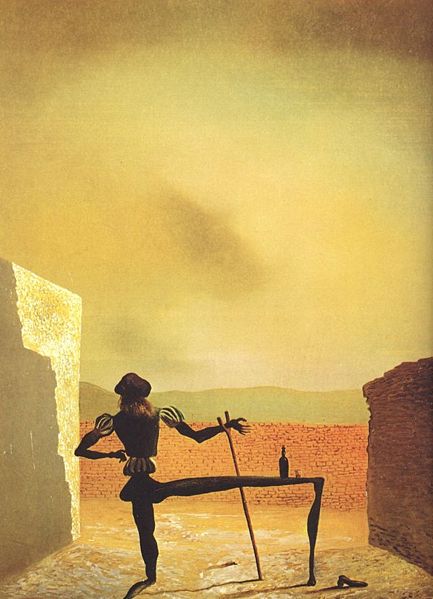Facts About The Ghost of Vermeer of Delft Which Can Be Used As a Table
"The Ghost of Vermeer of Delft Which Can Be Used As a Table" is a captivating oil painting by the renowned Surrealist artist Salvador Dalí. In this work, Dalí pays homage to Johannes Vermeer’s seventeenth-century masterpiece, "The Art of Painting." However, Dalí uniquely reinterprets Vermeer as a dark, spindly figure, kneeling with one leg extended and transformed into a table surface. The painting’s background features elements from Dalí's own surroundings in Port Lligat, including walls and distant mountains. Unlike Vermeer in the original work, who leans on a maulstick, Dalí’s Vermeer leans on a crutch.
Although the painting is neither signed nor dated, experts believe it was completed around 1934. Today, this intriguing piece can be viewed at the Salvador Dalí Museum in St. Petersburg, Florida, where it is on loan from the E. and A. Reynolds Morse collection.
Dalí was evidently inspired by "The Art of Painting" around 1934, as he created several other works during this period that reference it, including "Masquerader, Intoxicated by the Limpid Atmosphere" "The Ghost of Vermeer of Delft" "Enigmatic Elements in a Landscape" and "Spectre of Vermeer’s Chair." Dalí had a profound admiration for Vermeer and even incorporated themes from Vermeer’s "The Lacemaker" into some of his artworks. This painting exemplifies Dalí’s broader exploration of historical art and his recurring motifs, such as anthropomorphic furniture and crutch-like objects, throughout his career.

 Canada
Canada